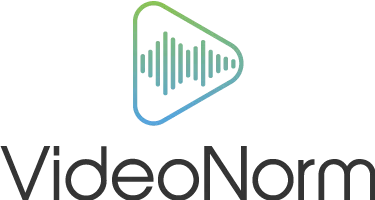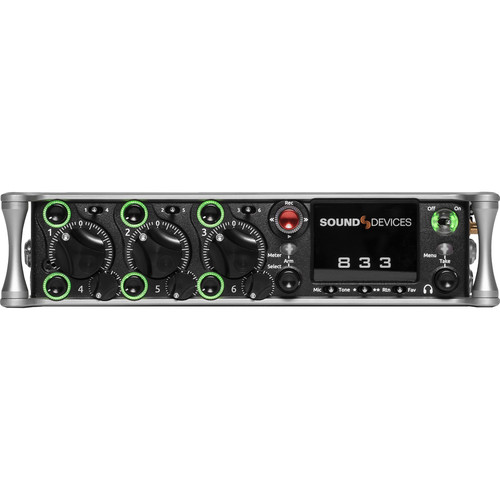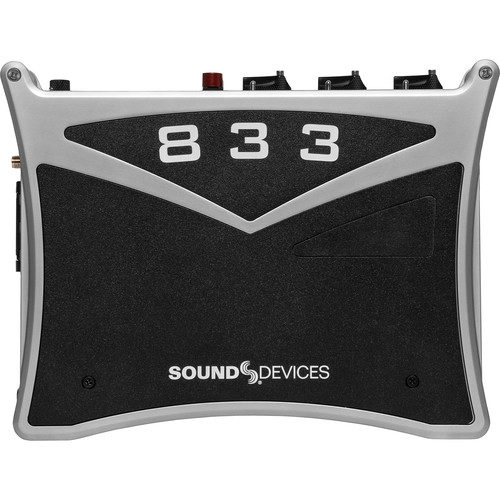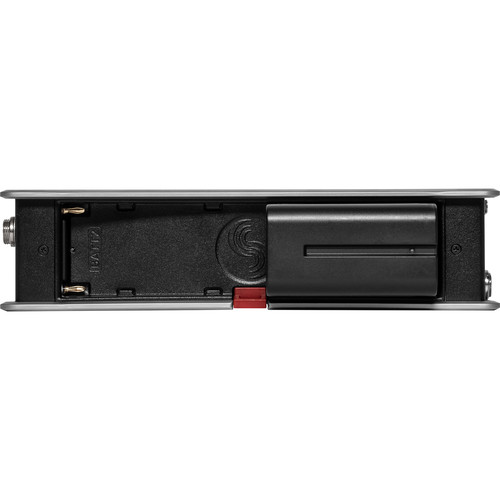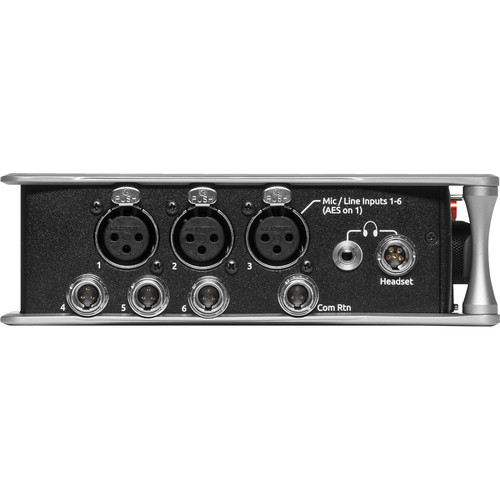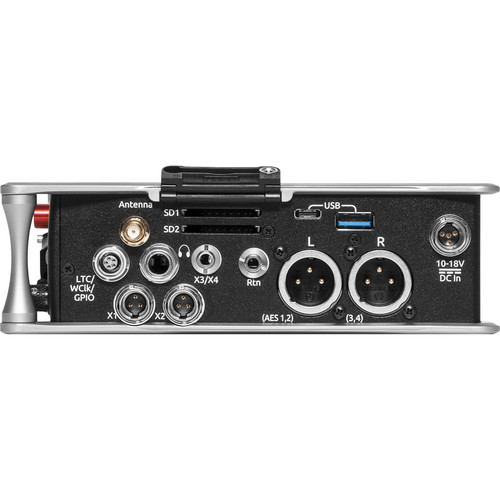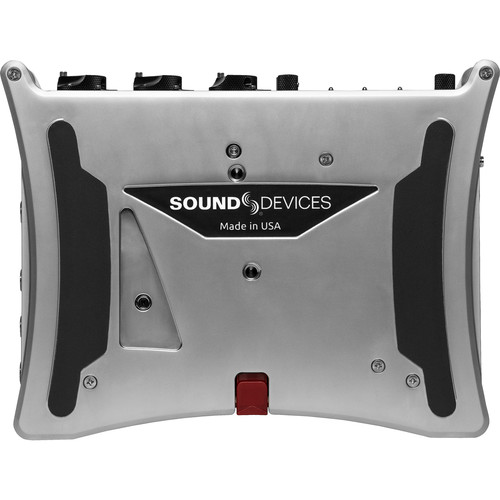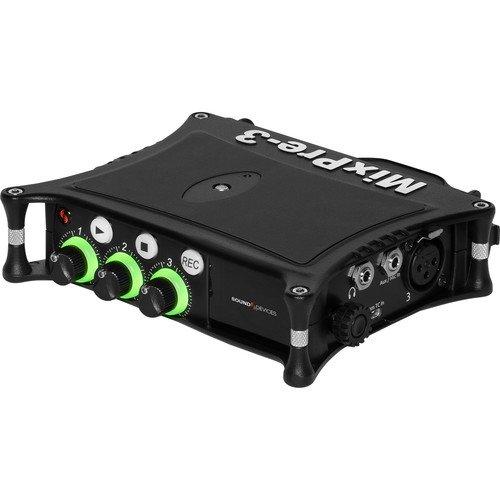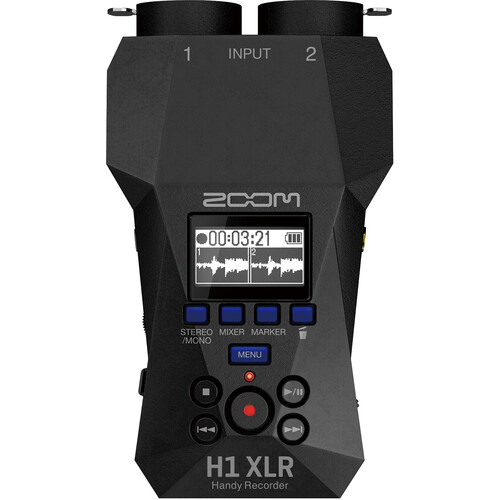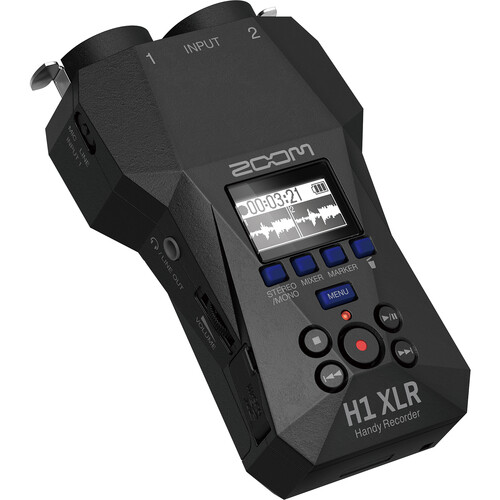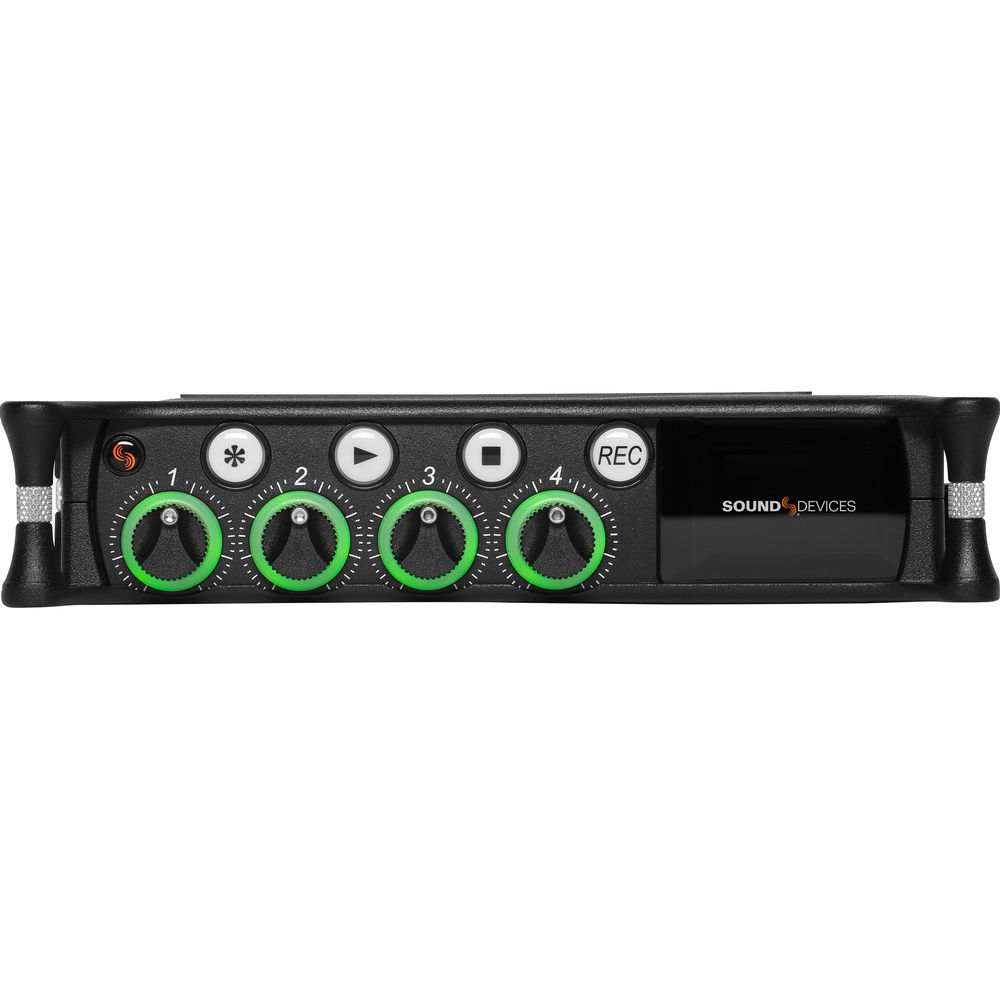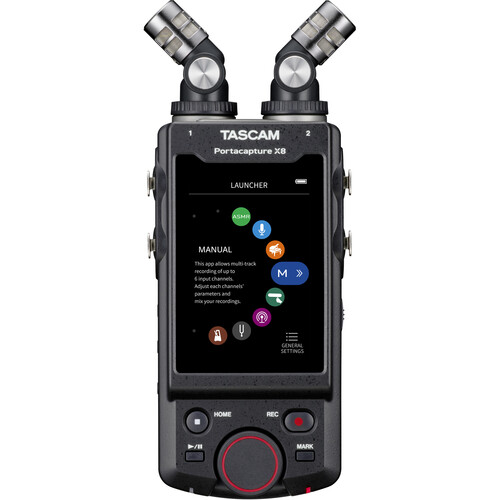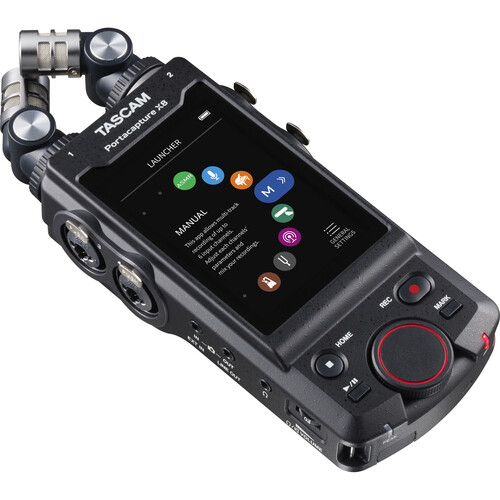Overview
The 833 is a versatile and compact mixer-recorder that is perfect for mobile and small productions. It features 6 ultra low-noise, all-new microphone preamplifiers, 8 channels, 6 buses, and 12 tracks. With 6 analog outputs and ultra-accurate timecode, this device is a professional’s tool for on-the-go audio recording.
In addition to its impressive features, the 833 also has USB-A and C ports for the SD-Remote app, linear fader control via MCU, keyboard, and file transfer. It also includes Dugan Automixing for up to 8 channels and a firmware update is now available for the 8-Series v9.20 firmware. The 833 is fully routable and has multiple powering options, making it a convenient and essential addition to any production kit.
Summary
Recording Formats: WAV
Outputs: XLR-R
Battery Mount / Type: L-Mount
Included in box
1x 833 Portable Compact Mixer-Recorder
About the Sound Devices 833 Mixer-Recorder
Firmware Update: 8-Series v9.20 Firmware for the 8-Series is now available here.
833 – Fully routable. Ultra-portable.
The 833 is the professional’s tool for mobile and small productions. Like the popular Sound Devices 633, the 833 is small, lightweight, and compact. A tactile interface with dedicated faders, trim knobs, and PFL switches makes this mixer-recorder ideal for run-and-gun bag use.
The 833 has 6 mic/line preamplifiers, 8 channels, 12 tracks, 6 analog outputs, and ultra-accurate timecode. Many features have carried over from the premium Sound Devices’ Scorpio, such as Sound Devices’ new preamplifier design, 2 SD card slots, dual L-Mount battery charging and powering, and an internal 256 GB SSD.
Additionally, the 833 shares the same processing architecture and multiple FPGAs as the Scorpio. This enables the 833 to be fully routable, and any physical input can be routed to any track. The 833 features both digital and analog inputs and outputs, and has multiple powering options, so it will fit effortlessly into your existing kit.
A built-in three band EQ may be set to either pre- or post-fade for each channel to tackle any problems directly on-set. Enable Dugan Automixing to automatically attenuate unused microphones in multi-microphone applications. Up to 8 channels can be automixed at a time, and two separate groups can be mixed simultaneously.
Dedicated coms and slate allows for professional bi-directional communication with other crew members. Send customized mixes to the camera or crew with multiple mix buses. With the ability to record to three media simultaneously, you can turn over SD cards to production at the end of the day while keeping a backup on the internal 256 GB SSD.
The 833 may be controlled via the companion Android app, SD-Remote, which features transport controls, metering, and sound reports. For an instant mobile workstation, choose from one of several supported USB control surfaces for remote fader and transport control.
Analog Inputs
Frequency Response 10 Hz to 80 kHz ± 0.5 dB (192 kHz sample rate, re 1 kHz)
THD + Noise 0.005% max (mic in, 1 kHz, 22 Hz–22 kHz BW, trim at 20, fader at 0, -10 dBu in)
Equivalent Input Noise -131 dBV (-129 dBu) max (mic in, A-weighting, 76 dB gain, 150 ohm source impedance)
Processing Engine Highly extensible, full FPGA-based audio processing, 3 FPGAs
Six-way ARM multiprocessor system
64-bit audio processing precision
Inputs
Mic/Line inputs 6 total, all fully featured; 3 on full-size XLR, 3 on TA3
Inputs Mic-level inputs: (XLR, TA3): Class-A, discrete differential long-tail pair, 4k ohm input impedance
Line-level inputs: (XLR, TA3,): active- balanced, 4k ohm input impedance
48 V phantom: full 10 mA to all 6 inputs simultaneously
8 Total analog inputs: 6 mic-line inputs, 2 on returns
AES3 or AES42 available on XLR input 1
AES42: +10 V, 250 mA available, mode-1, auto-ASRC
USB Audio: 2 Inputs
Aux (3.5 mm: unbalanced 2-channel, 4k ohm input impedance
Com Rtn (TA3, 3.5 mm) balanced, 1- channel, 8k ohm input impedance
External Slate Mic (TA5): balanced, 8k ohm input impedance, menu-selectable 12 V phantom
Maximum Input Level Mic: +8 dBu (2.0 Vrms)
Line: +28 dBu (19.5 Vrms)
Aux: +18 dBu (6.2 Vrms)
Com Rtn: +24 dBu (12.3 Vrms)
External Slate Mic: +12 dBu (3.2 Vrms)
Buses 6 Buses (L, R, 1-4)
Left and Right Mix Bus receives post-fade isolated channels. Optional NoiseAssist plugin instances can be applied to any bus. Buses 1-4 can receive pre-fade, post-fade, or independent send level from isolated channels, Return, and Com Return.
High-Pass Filters Adjustable 10 Hz to 320 Hz, 18 dB/oct. 1st stage analog (before preamp), 2nd stage digital.
Limiters Limiters available at all channels, buses, headphones, for all sample rates
Analog first stage, all subsequent stages digital
Attack time: adjustable 1 to 200 ms
Release time: adjustable, 50 ms to 1000 ms
Threshold: adjustable, -2 dBFS to -12 dBFS
Selectable ratio: inf:1, 20:1, 18:1, 16:1, 14:1, 12:1, 10:1
Knee: soft, hard
Compressors Compressors available at all channels (pre or post-fade) and buses for all sample rates
Attack time: adjustable, 1 to 200 ms
Release time: adjustable, 50 ms to 1000 ms
Threshold: adjustable, 0 dBFS to -40 dBFS
Selectable ratio: adjustable, 1:1 to 20:1
Knee: soft, hard
Delay Channel Adjustable 0-50 ms
Output Adjustable 0-500 ms
Maximum Gain Trim stage (mic input): 76 dB
Trim stage (line input): 50 dB
Fader stage: 16 dB
Bus stage: 16 dB
Headphone stage: 20 dB
Mic-to-Line: 108 dB
Mic-to-Headphone: 112 dB
TA5 (along with mic input pins) for single connection to headset + mic High output, 4 ohm output impedance, 400 mW + 400 mW at each connector, all individually driven Compatible with headphones of any impedance
Outputs
Outputs XLR (L, R) active-balanced, 250/3.2k/120 ohms (mic/-10/line)
TA3 (X1/X2) active-balanced, 250/3.2k/120 ohms (mic/-10/line)
3.5 mm (X3/X4): unbalanced, stereo, 1.8k ohms
Maximum Output Level (all into 10k load) Line: +20 dBu (7.8 Vrms)
“-10”: +6 dBu (1.5 Vrms)
Mic: -20 dBu (0.078 Vrms)
X3/X4 Out: +6 dBu (1.5 Vrms)
Headphone outputs (¼”, TA-5): +14 dBu (4.0 Vrms)
Digital Outputs AES3 transformer-balanced, in pairs; 1-2 (XLR-L), 3-4 (XLR-R), 110 ohm, 2 V p-p, AES and S/PDIF compatible
Headphone Outputs ¼”, 3.5 mm
TA5 (along with mic input pins) for single connection to headset + mic
High output, 4 ohm output impedance, 400 mW + 400 mW at each connector, all individually driven Compatible with headphones of any impedance
Recording A/D converters :32-bit, 120 dB, A-weighted dynamic range typical
A/D converters :Sampling rates 44.1 kHz, 47.952 kHz, 48 kHz, 48.048 kHz, 96 kHz, 192 kHz
Bit Depth 16, 24
Recording Internal 256 GB SSD; two removable SD Cards, 10% over-provisioned for optimum performance
Simultaneous recording to internal SSD and the two SD cards
exFAT formatting
12 tracks (8 iso channels, 4 buses)
Broadcast WAV monophonic and polyphonic file format
64-bit WAV (RF64) monophonic and polyphonic; support for files > 4 G
AAC 2 track at 48 kHz, selectable bit rate 32, 64, 128, 192, 256 kbps
Automatic Mixing Dugan Automixer up to 8 channels on Left and Right Mix bus
MixAssist up to 8-channels on Left and Right Mix bus
Noise Suppression Via optional paid Sound Devices NoiseAssist or CEDAR sdnx Plugins
Two, four, or eight instances of Noise Suppression can run on any combination of isolated channels (excluding 17-32 on Scorpio), or buses.
Attenuation range: 0-20 dB
NoiseAssist operates with sampling rates of 44.1 kHz to 48.048 kHz.
CEDAR sdnx operates with sampling rates of 44.1 kHz to 96 kHz.
NoiseAssist audio path latency: 0.77 ms @ 48kHz
CEDAR sdnx audio path latency: 0.27 ms @ 48kHz, 0.14ms @ 96kHz
USB USB-C (USB 3.1 type 1) for file transfer of internal SSD, both SD Cards.
USB-C 2-in/2-out USB audio interface
HUSB-A host for keyboard, external controller, external USB hubs supported for connecting multiple devices.
Timecode and Sync Modes Supported: Off, Rec Run, Free Run, 24h Run, External, including External Auto-Record and Continuous modes.
Frame Rates: 23.98*, 24, 25, 29.97 DF, 29.97 ND, 30 DF, 30 ND
Sample/Timecode Accuracy: 0.1 ppm (0.25 frames per 24 hours)
Timecode Input: 20k ohm impedance, 0.3 V – 3.0 V p-p (–17 dBu – +3 dBu)
Timecode Output: 75 ohm impedance, 5 V p-p (+7 dBu)
Word Clock Input: 10k/75 ohm selectable impedance, 1-5 V p-p input sensitivity
Word Clock Output: 75 ohm impedance, 5 V p-p output, at SR
Remote Control Sound Devices CL-12 Linear Fader Controller
USB MIDI MCU Control – supported 3rd party fader controllers
SD-Remote Android Tablet app via USB or Bluetooth LE
SD-Remote Android Phone app via Bluetooth LE
SD-Remote iPad and iPhone app via Bluetooth LE
USB Keyboard
External Timecode Record Trigger
File Delivery to Cloud Compatible with Viviana Cloud
LCD 320×240, Transflective, excellent sunlight visibility
Larger touchscreen display available via USB-connected SD-Remote app
Power External: 10-18 V input on locking TA4 connector, (pin 4 positive, pin 1 ground), supports Smart Battery telemetry
Dual rear-mount Sony-style L-mount batteries with chargers
Current Draw, at 12 V no battery charging All mic preamps off: 730 mA
All mic preamps on: 920 mA
All mic preamps on, 192 kHz sample rate, recording to internal SSD and 2 SD Cards: 1.07 A
Intelligent power-down of unused mic preamps and other internal circuits
Environmental Operating: -20° C to 60° C, 0 to 90% relative humidity (non-condensing)
Storage: -40° C to 85° C
Dimensions (H x W x D) 5.1 cm x 22 cm x 17 cm;
2.0 in. x 8.7 in. x 6.6 in
Weight 2.75 lbs (unpackaged, without batteries)
1.25 kg (unpackaged, without batteries)
6 ultra low-noise, all-new microphone preamplifiers
8 channels, 6 buses, 12 tracks
6 analog outputs
Ultra-accurate timecode
256 GB internal SSD, 2 SD card slots
USB-A and C ports for SD-Remote app, linear fader control via MCU, keyboard, and file transfer
Dugan Automixing for up to 8 channels
